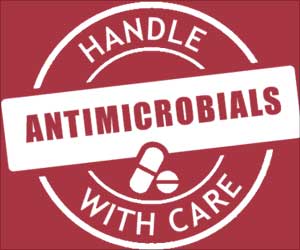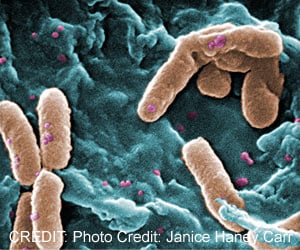WHO updates its list of the most dangerous drug-resistant bacteria to guide global efforts in developing new treatments and combating antimicrobial resistance.
- The WHO's 2024 list categorizes 15 drug-resistant bacteria by priority
- The list guides research and development of new antibiotics
- Antimicrobial resistance endangers the effectiveness of modern medicine
WHO updates list of drug-resistant bacteria most threatening to human health
Go to source). AMR occurs when microorganisms like bacteria, viruses, fungi, and parasites evolve to resist the effects of medications, making infections harder to treat. This resistance is primarily driven by the misuse and overuse of antimicrobials. The updated BPPL aims to guide research and development (R&D) for new antibiotics and promote international collaboration to foster innovation.
Gram-negative bacteria, listed as critical priority pathogens by WHO, have an astonishing ability to not only resist treatment but also transfer their resistance genes to other bacteria, creating a superbug domino effect. #antimicrobial #antibiotic #medindia’
The Importance of the Bacterial Priority Pathogens List 2024
"By mapping the global burden of drug-resistant bacteria and assessing their impact on public health, this list is key to guiding investment and grappling with the antibiotics pipeline and access crisis," stated Dr. Yukiko Nakatani, WHO’s Assistant Director-General for Antimicrobial Resistance ad interim. Since its first release in 2017, the BPPL has become crucial in addressing the growing threat of AMR, which endangers the efficacy of modern medicine.Critical Priority Pathogens
The critical priority pathogens include gram-negative bacteria resistant to last-resort antibiotics and rifampicin-resistant Mycobacterium tuberculosis. These pathogens are major global threats due to their high burden and resistance to treatment, coupled with their ability to spread resistance to other bacteria. Gram-negative bacteria can pass genetic material to other bacteria, enhancing their drug resistance.
High Priority Pathogens
High priority pathogens like Salmonella and Shigella significantly impact low- and middle-income countries. Other high priority pathogens, including Pseudomonas aeruginosa and Staphylococcus aureus, pose severe challenges in healthcare settings. Additionally, Neisseria gonorrhoeae and Enterococcus faecium present unique public health challenges, requiring targeted research and public health interventions.
Medium Priority Pathogens
Medium priority pathogens such as Group A and B Streptococci, Streptococcus pneumoniae, and Haemophilus influenzae are newly added to the 2024 list. These pathogens, presenting a high disease burden, need increased attention, particularly in vulnerable populations like children and the elderly in resource-limited settings.
Addressing the Anti-Microbial Resistance Challenge
“Antimicrobial resistance jeopardizes our ability to effectively treat high burden infections, such as tuberculosis, leading to severe illness and increased mortality rates," said Dr. Jérôme Salomon, WHO's Assistant Director-General for Universal Health Coverage, Communicable and Noncommunicable Diseases. The BPPL 2024 emphasizes a comprehensive public health approach to tackling AMR, including universal access to quality and affordable prevention, diagnosis, and treatment measures.The updated list reflects the dynamic nature of AMR, with five pathogen-antibiotic combinations removed and four new ones added since 2017. Notably, third-generation cephalosporin-resistant Enterobacterales are now a standalone item in the critical priority category, emphasizing their burden and need for targeted interventions. Additionally, carbapenem-resistant Pseudomonas aeruginosa (CRPA) has moved from critical to high priority due to recent decreases in global resistance. However, investment in R&D and prevention strategies for CRPA remains essential.
The 2024 Bacterial Priority Pathogens List Categories
Critical Priority- Acinetobacter baumannii, carbapenem-resistant
- Enterobacterales, third-generation cephalosporin-resistant
- Enterobacterales, carbapenem-resistant
- Mycobacterium tuberculosis, rifampicin-resistant
- Salmonella Typhi, fluoroquinolone-resistant
- Shigella spp., fluoroquinolone-resistant
- Enterococcus faecium, vancomycin-resistant
- Pseudomonas aeruginosa, carbapenem-resistant
- Non-typhoidal Salmonella, fluoroquinolone-resistant
- Neisseria gonorrhoeae, third-generation cephalosporin- and/or fluoroquinolone-resistant
- Staphylococcus aureus, methicillin-resistant
- Group A streptococci, macrolide-resistant
- Streptococcus pneumoniae, macrolide-resistant
- Haemophilus influenzae, ampicillin-resistant
- Group B streptococci, penicillin-resistant
References:
- WHO updates list of drug-resistant bacteria most threatening to human health - (https://www.who.int/news/item/17-05-2024-who-updates-list-of-drug-resistant-bacteria-most-threatening-to-human-health)
Source-Medindia













